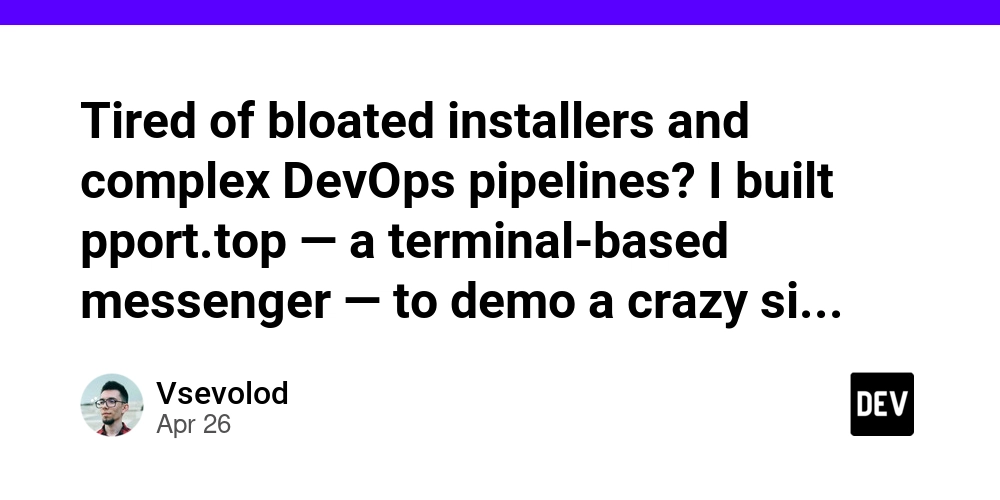
Is Overengineering Killing Your Startup? How to Avoid Code Complexity Catastrophe
Are complex codebases the silent killer of startup agility? Discover how ego-driven overengineering can cripple your startup's ability to pivot, and learn how to embrace pivot-driven engineering for speed and success.
The Hidden Cost of Complex Code: Why Startups Suffer
Imagine adding a small feature feels like navigating a minefield. Overly complex code slows development, increases bugs, and ultimately hinders product-market fit, costing companies billions annually.
- Agility roadblock: Excessive code complexity makes pivoting or iterating extremely difficult.
- Hidden costs: Maintenance issues consume valuable developer time.
- Startup killer: In a fast-paced startup environment, overengineering can lead to missed market opportunities.
Don't design a Ferrari when a horse and carriage will do! Focus on simplicity to solve your immediate problems and avoid unnecessary complexity.
Ego-Driven vs. Pivot-Driven Engineering: Choose Your Path
The root of overengineering often lies in ego-driven decisions. Should startups choose to build fancy solutions at the expense of practical needs?
Ego-Driven Overengineering: Building for Your Resume, Not the Customer
Driven by pride instead of business needs, developers often choose solutions that look impressive but fail in real-world applications.
- Resume-driven decisions: Choosing technologies to impress recruiters instead of focusing on practicality.
- Complex solutions: Building systems that are hard to maintain and scale.
Cautionary Tale: A startup wasted months developing a custom architecture, while competitors thrive with simpler, proven technologies. The over-engineered solution became a maintenance nightmare.
Pivot-Driven Engineering: Embrace Simplicity and Adaptability
Pivot-driven engineering prioritizes speed and adaptability. It's about building just enough to validate the business' assumptions, with the expectation of future pivots and iterations.
- Prioritize Simplicity: Use a monolith instead of premature microservices. Use established cloud services instead of building your own infrastructure.
- Expect change: Build code that is easy to refactor when the business inevitably changes.
**Pivot-driven engineering emphasizes simple and modular code, optimizing for adaptability rather than prematurely complex designs.
Big Tech's Secret: Mastering Simplicity and Complexity Control
Even top tech companies battle code complexity. Learn from Netflix, Google, Shopify, and Stripe on how to combat this challenge.
Netflix: Treating Complexity as a Bug
Netflix proactively simplifies code by identifying complexity "hotspots" and refactoring them.
- Metrics-driven refactoring: Analyzing code with static analysis tools to identify complex areas.
- Improved maintainability: Simplifying code improves understandability and allows developers to easily implement changes.
Netflix proves that even experienced teams can fall into the complexity trap, and actively simplifying code is essential to agility.
Google: Simplicity is Non-Negotiable
Google's engineering culture prioritizes simplicity to maintain reliability and developer velocity.
- Code Health initiative: Focused to maintain code quality across Google's codebase.
- Internal tooling: To monitor code complexity during the development process.
Google's internal processes ensure that engineers consistently choose simpler solutions to promote efficiency and product improvement.
Shopify: Deleting Code is a Feature
Shopify actively "extracts complexity" by deleting large amounts of code from their main codebase.
- Aggressive Refactoring and Pruning: Helps keep the core platform lean and speedy.
- Metric-driven process: Deletion is viewed as a critical improvement to maintain developer velocity.
- Modular design: Enforcing boundaries between components to prevent over complication.
Shopify demonstrates that complexity actively slows innovation and simplicity is critical for long-term success.
Stripe: Cost of Bad Code
Stripe emphasizes code clarity and invests in developer productivity to minimize the impact of complex code.
- Rigorous testing: All code goes through testing and code reviews curb complexity.
- Quantifying "Bad Code" Costs: Demonstrating complexity and technical debt are substantial expenses.
Stripe illustrates how clear code and a focus on developer experience leads to faster development and easier product extensions.
Measuring the Intangible: Key Code Complexity Metrics
You can't improve what you don't measure. How do you turn the abstract concept of "code complexity" into a tangible metric?
Cyclomatic Complexity (CC): Charting Code Paths
CC measures paths through code, highlighting overly complex functions that require extensive testing.
- Path analysis: Counting the number of independent code execution paths(if/else, loops, etc.)
- Complexity thresholds: High CC indicates more complexity, requiring more testing and potential code refactoring.
Cognitive Complexity: Gauging Human Understandability
A newer metric that measures of readability and human understanding, not just potential execution paths.
- Human-centered measurement: The metric directly measures how difficult code is for someone to understand.
- Complements CC Metrics: Gives a fuller picture, such as understanding Regex.
Maintainability Index (MI): Scoring Code Health
MI is an aggregate metric that rolls up complexity, lines of code, and other factors into a single score.
- Aggregate Measurement: A handy metric to check overall code maintenance.
- Provides project level insight Can track project and file level insights.























